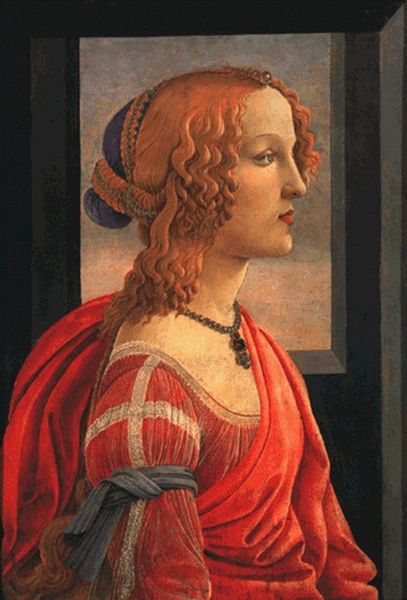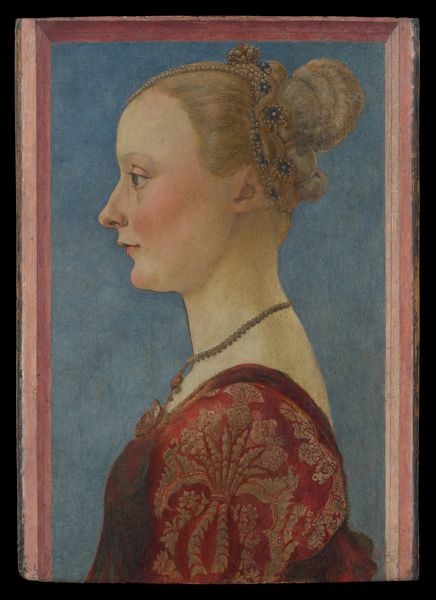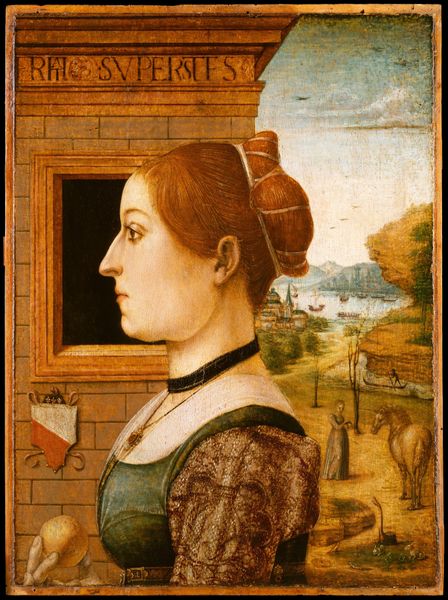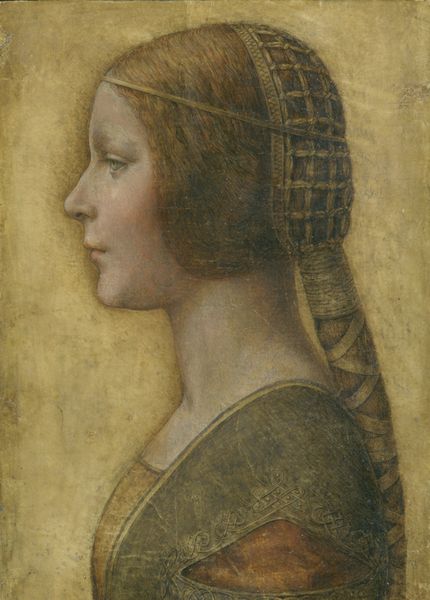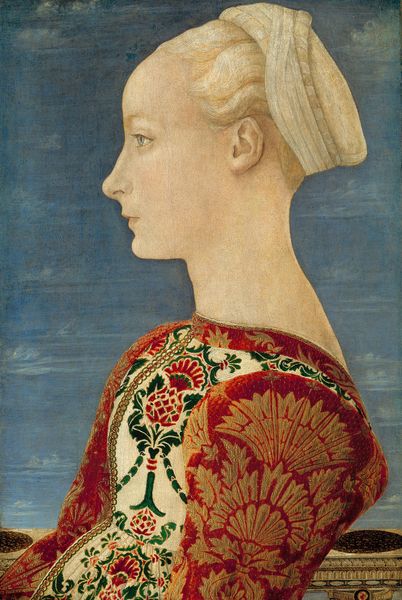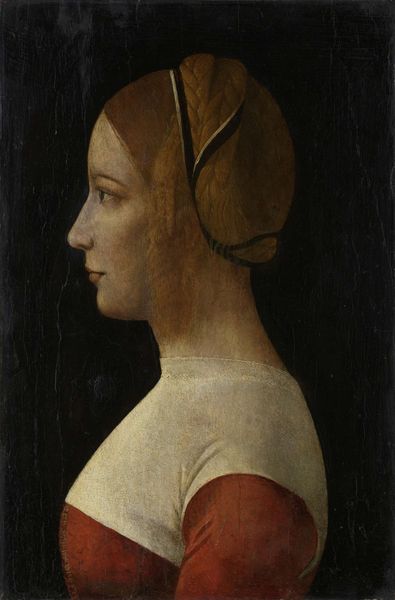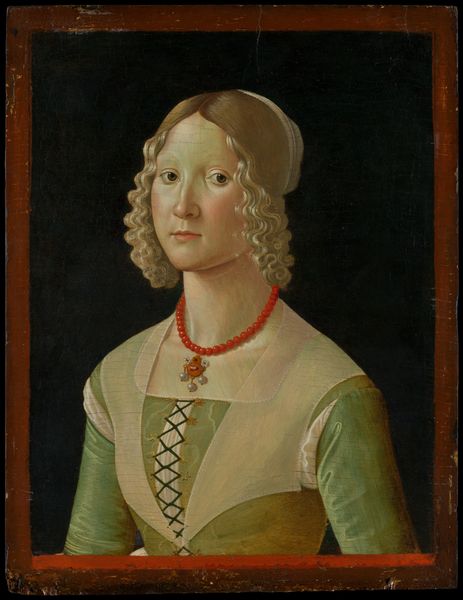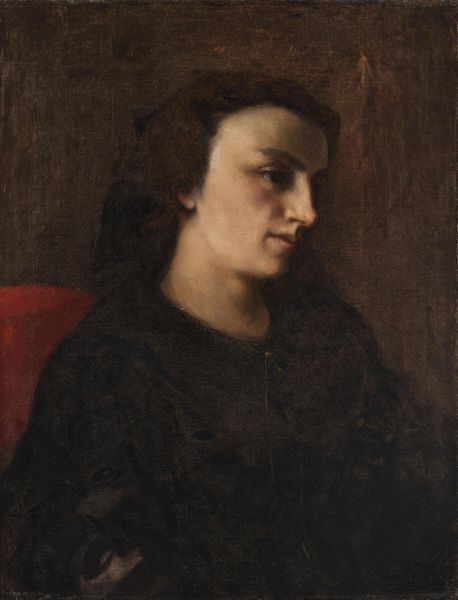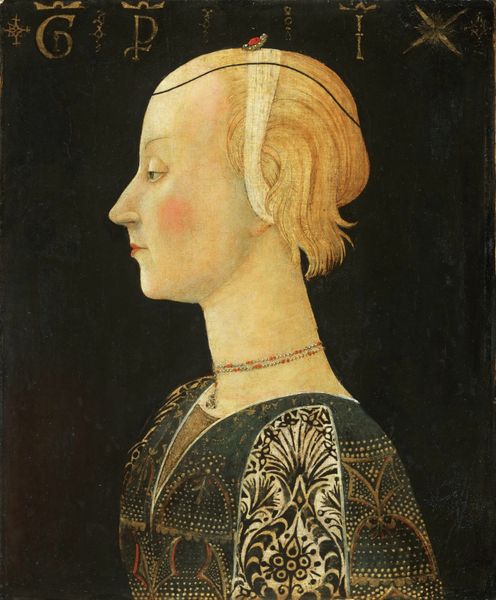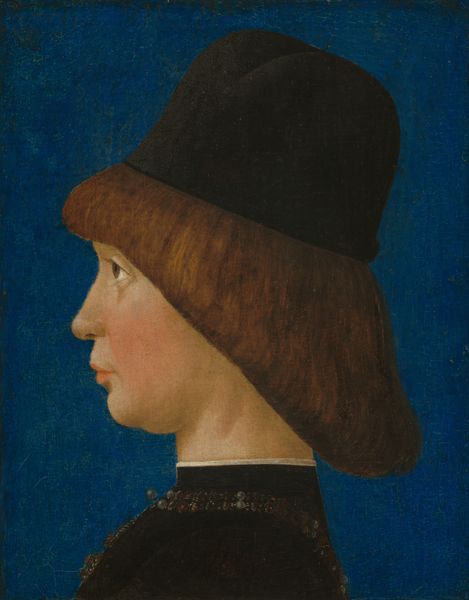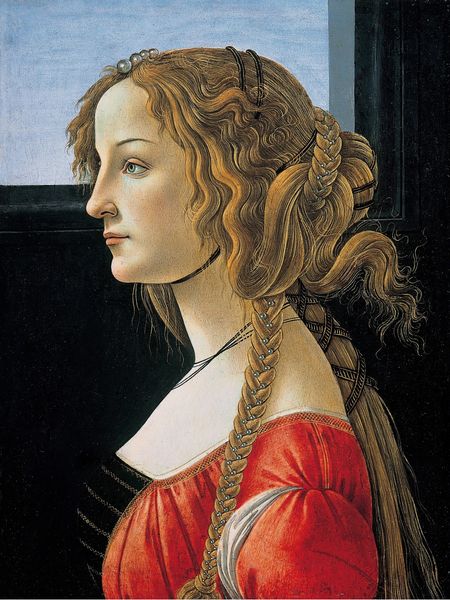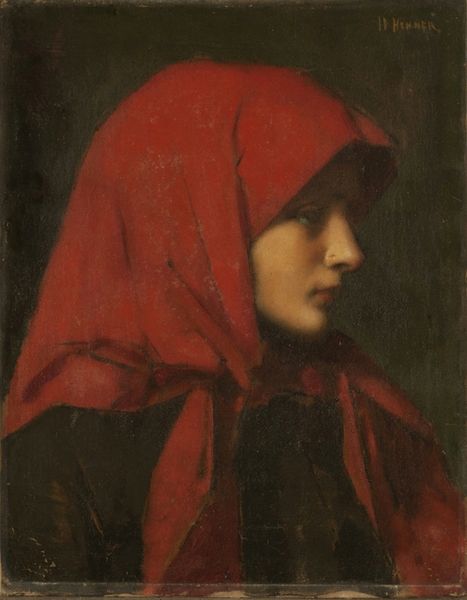
painting, oil-paint
#
portrait
#
painting
#
oil-paint
#
oil painting
#
geometric
#
italian-renaissance
#
early-renaissance
Dimensions: 16 1/4 x 12 1/4 in. (41.3 x 31.1 cm)
Copyright: Public Domain
Editor: We’re looking at "Portrait of a Woman" from around 1440-1450, attributed to Giovanni di Francesco del Cervelliera. It’s an oil painting and it has a really austere feeling, almost like a study in geometric forms. What stands out to you about it? Curator: I'm drawn to how the artist used oil paint. Consider the social implications; oil paint, as a new medium, represented a shift in artistic production. It offered greater control and allowed for layering. Here, observe the almost laborious rendering of the fabrics, the minute detailing possible because of this medium, all speak to the emerging mercantile wealth of the period and how that intersected with art production and consumption. Editor: That's interesting. I was just thinking about the pose and her simple clothes; it felt so detached. But if we look at the labor involved in even producing those simple clothes and then translating them into paint... Curator: Exactly! The portrait is a product of specific material conditions and societal structures. We must also consider the materials: Where did the pigments come from? What was the social status of the artisans grinding and mixing those colors? These seemingly 'minor' details highlight a whole system of labor. Editor: So, beyond just depicting someone, the portrait also inadvertently captures all of these hidden processes. It becomes less about the individual and more about the socio-economic world that enabled its creation? Curator: Precisely. Even the frame is constructed in a geometric manner. Think of the carpenters and guilds involved in even this component. We tend to look at art removed from that framework but these social ties are vital to meaning. Editor: That's given me so much to think about. I’ll never see an early Renaissance portrait in quite the same way! Thanks for pointing out the relationship between the materials and socio-historical context. Curator: My pleasure. Seeing art as part of the material world unveils connections and narratives we might otherwise miss.
Comments
No comments
Be the first to comment and join the conversation on the ultimate creative platform.
